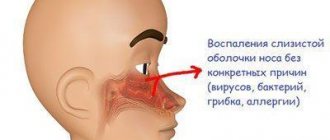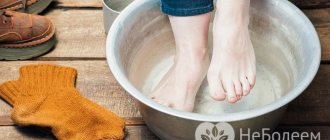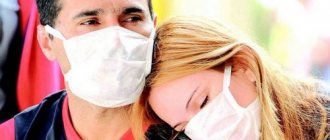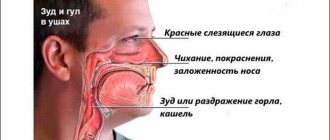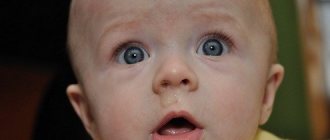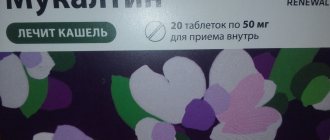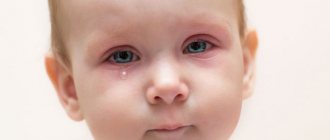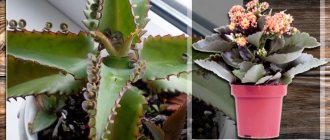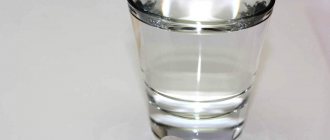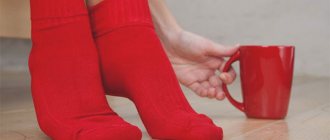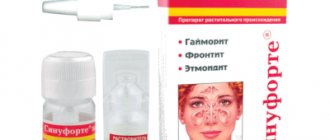Concept
What is sneezing? This is an unconditioned reflex that occurs in people and animals. With a sharp exhalation through the nasopharynx, all foreign bodies are eliminated from the respiratory organs. This reaction occurs from particles of dust, pollen, fluff and chemical components. A reflex appears from severe irritation of the nasopharyngeal mucosa.
What is sneezing as a process? It happens in several stages:
- There is a strong tickling sensation in the nose.
- Then a deep breath is taken, and the lungs fill with air.
- Then there is a slight lifting of the palate, and a contraction of the arches located in the pharynx, the base of the tongue tenses. Due to these changes, the nasopharynx and oral cavity are isolated.
- The man's eyes close. If they are open, you won't be able to sneeze.
- The abdominal muscles and the area between the ribs contract. The diaphragm is tensed, and the glottis is closed.
- Sneezing causes an increase in intra-abdominal and intrathoracic pressure.
- A person sneezes and exhales sharply.
If the sneezes are frequent, the person may take a few breaths in between. For 1 attack it happens up to 20 times. This is observed with severe irritation of the mucous membrane. There is a so-called reflex arc of sneezing: irritation of receptors - medulla oblongata - sneezing. This explains the mechanism of this phenomenon.
This information fully explains what sneezing is. It can happen either rarely or often. When this occurs very often, it causes discomfort.
The child has
If a child sneezes regularly and the sneezing is accompanied by mucous discharge from the nose, then it is a cold. It is not difficult to restore nasal breathing with drops that constrict nasal vessels. It is enough to put drops in once every few hours and clean the crusts from your nose. If you drop a few drops of the juice of the domestic Kalanchoe plant into a child’s nose, he will begin to sneeze continuously and his nose will clear. Uncontrollable sneezing from Kalanchoe juice lasts about 10 minutes, then everything stops.
If a child sneezes, but there is no runny nose, then perhaps this is due to the abundance of crusts in the nose, which interfere with normal breathing, or this is the body’s response to the dry air in the room. A child will certainly sneeze if you lightly tickle his nose or suddenly turn on a bright light in the room.
Causes
The sneezing reflex comes from allergies and respiratory ailments. Irritation of the mucous membrane of the nasopharynx is observed from:
- Toxins formed on the nasopharyngeal mucosa due to the proliferation of pathogenic microorganisms. If you sneeze repeatedly, this is the first sign of a respiratory illness. In this case, other symptoms of a cold are also noticeable: runny nose, sore throat and weakness.
- Allergens. The irritant can be household dust, pollen, animal fluff and some products. Allergies are almost always accompanied by lacrimation and runny nose, and water leaks from the nose.
- Strong aromas from perfumes, household chemicals and other chemical components. Sneezing occurs from tobacco smoke and heavily polluted air. Often a person sneezes heavily after walking near a busy highway.
- Foreign body in the nose. This could be a piece of dandelion fluff or a small object. When playing, children often put small objects into their noses, which trigger the sneeze reflex.
- Sudden temperature changes. For example, when leaving the house outside in winter.
- Exposure to bright sun. This is due to the fact that the rays irritate the eyes, and they will water; the tears are partially removed through the lacrimal canaliculi into the nose and irritate the nasopharyngeal mucosa.
Sneezing without fever followed by mucus discharge is considered a normal reaction of the body. This does not require treatment. But this is the norm when sneezing does not occur very often. When this phenomenon is frequent, it may indicate pathology.
When sneezing occurs due to allergies, itching appears in the nasal mucosa and watery eyes. Skin rashes of various types also occur. It will not be difficult to identify allergies. All allergy symptoms appear after walking near flowering plants, playing with animals or being in a dusty room. Some food products and household chemicals can lead to allergies.
If you have a fever when sneezing, it is associated with a cold. There may also be a sore throat or malaise. In this case, sneezing is not harmless. If you pay attention to this sign in a timely manner, you will be able to quickly begin treatment and prevent the infection from spreading throughout the body.
When sneezing, you should not pinch your nose, since the air pressure at this time is high, and your eardrums may be damaged. Due to improper sneezing, the infection can spread to the paranasal sinuses.
Colds
Sneezing and runny nose occur with every cold. They occur immediately after hypothermia or the entry of an infectious agent into the body, and precede the manifestation of other symptoms.
In the initial stages of the disease, the sneezing reflex is more pronounced, then fades away somewhat. During the fever-free period of the disease, it is recommended to drink hot tea or uzvar, and steam your feet in water with the addition of mustard powder.
But if the snot flows like a stream, then it is better to turn to traditional methods of treatment.
- Vasoconstrictor nasal sprays help to sharply reduce swelling. When choosing these drugs, it is important to correctly follow the dosage and frequency of administration. The mechanism of action of vasoconstrictor drops is a local effect on adrenaline receptors, due to which the vascular wall narrows. One of the pitfalls of this group of drugs can be considered rapid addiction. That’s why before you use them to get rid of a runny nose, you need to carefully read the instructions.
- Moisturizing drops, for example, Aquamaris or Aqualor, are rarely used as the main drug. Such drops will not eliminate sneezing and an annoying runny nose, but they will well moisturize dry mucous membranes and stimulate the normal functioning of the glands.
- Drops with an antiviral effect are effective only when identifying the pathogen. A trusted attending physician can best advise how to treat a runny nose due to a viral disease.
- Drops with the addition of essential oils have an antiseptic effect. They can be classified as homeopathic remedies and taken for any type of rhinitis. Many of them also have a refreshing and decongestant effect.
- Aerosol antibacterial drops for the common cold are effective, respectively, for diseases of bacterial etiology. Since they have an exclusively local effect, they are approved for the treatment of children and pregnant women.
Rinsing the nasal passages with salted water or furatsilin solution will help in the fight against sneezing.
It is better not to use potassium permanganate, as it causes a gag reflex and has a very specific smell.
Before treating a runny nose and other manifestations of colds on your own, you should seek qualified medical help. An integrated approach to therapy will allow you to quickly get rid of not only depressing symptoms, but also their very cause.
Chamomile Herbal Tea Recipe (click on image)
If you experience cold symptoms, it is better to seek medical help. After all, the doctor will tell you how to stop rhinorrhea and get rid of annoying sneezing. When you have a cold, it is extremely important to follow not only medical recommendations, but also sleep and rest patterns. It is important to get enough sleep and not overload the body with physical or mental stress.
To prevent dehydration, you should drink large amounts of warming drinks (tea, compote, herbal decoctions). Rinsing even with ordinary salt water helps to quickly get rid of pathogenic flora and their waste products.
If there is a large amount of discharge, we remove it with a special aspirator. Different models of nozzle ejector are available in pharmacies and are provided with detailed instructions.
Diagnostics
After going to the hospital, diagnostic measures are prescribed to determine the cause of sneezing. You need to contact an otolaryngologist. During the examination, he identifies colds, but additional tests are usually not required.
The rhinoscopy technique is used. Using an optical device that has mirrors, the doctor examines the nasopharynx and nasal mucous membranes. Since a rearward view is provided, the doctor, based on the results of the visualization, draws up a complete picture to identify the diagnosis.
If it turns out that sneezing is caused by allergic rhinitis, a special test is needed to determine the exact type of allergen. The diagnosis is made by an allergist after receiving the results of the study.
Allergy treatment
If you experience sneezing without a runny nose, it is due to an allergy. If you want to sneeze, you should not suppress this symptom. This probably eliminates pathogenic microorganisms in the nasopharynx. People do not get sick with colds very often, not only because of good immunity, but because of periodic cleansing of the respiratory tract by sneezing.
If this symptom appears due to allergies, then you need to avoid allergens and take antihistamines in a timely manner. Typically, people prone to allergies take anti-allergenic drugs before flowering. Drugs such as Cetrin, Claritin and Loratadine are effective. They have a prolonged effect, so they only need to be taken once a day.
Sneezing and runny nose without fever: causes and treatment
If you suddenly start sneezing a lot, it means that copious mucus discharge from the nose will soon appear. Doctors say that these are two directly interrelated processes. Constant sneezing is almost always accompanied by rhinitis. These signs begin either simultaneously or alternately, depending on the disease.
To get rid of them, first identify the causes of their occurrence, and then look for possible methods of treatment. If the appearance of snot and sneezing is caused by ARVI, then therapy is carried out using antipyretic and anti-inflammatory drugs. However, what should you do if these symptoms occur without fever? How to treat an unpleasant condition? Let's figure it out.
Causes of sneezing and runny nose in the morning
Sneezing and snot are primarily a protective reaction of the human body at the reflex level, thanks to which it is possible to get rid of microparticles that have entered the nasopharynx. The process itself is aimed at freeing the airways from irritants.
Unpleasant symptoms in the morning can occur due to:
Hypothermia. If the room was too cold at night or there were drafts, then as the body becomes hypothermic, snot and nasal congestion often appear. Allergic reaction to fur. If there are animals in the apartment, then it is possible that such symptoms in the morning are associated with a reaction the body to produce allergens to their fur.
Allergic reaction to dust. Regardless of how often the apartment is cleaned, no one can completely get rid of dust. Especially a lot of it accumulates in bed linen, blankets and pillows, so the appearance of rhinitis in the morning can be associated precisely with an allergy to dust. Chronic rhinitis. Discharge of mucus from the nose appears mainly in the morning.
During the day they stop, but the inflammation remains, so constant signs of the disease continue in the morning for quite a long time. Allergic reactions to flowering in the spring-summer period. Profuse flow from the nasal cavity during the flowering period of plants worries allergy sufferers mainly in the mornings.
They are not able to cope with an attack quickly, which greatly irritates the nasopharynx.
?
Frequent sneezing and runny nose. Causes
Sneezing and mucus discharge from the nose is the so-called protective mechanism of the body provided by nature. However, if these symptoms constantly bother you, then you should seek help from a specialist, since rhinitis is caused by both allergic reactions and chronic diseases.
If symptoms such as constant itching in the nose and sneezing, snot flowing, and watery eyes are clearly allergic in nature, then this is the body’s response to the production of allergens and there is nothing to be afraid of.
In this case, mucus, on the contrary, only helps to clear the nasal passages of microparticles that irritate it.
In the absence of fever and other complications, treatment with antihistamines ( Tavegil , Claritin , Suprastin ) is required.
If itching in the nostrils is caused by a cold, then treatment must be started immediately, otherwise you may accidentally infect others.
?
How to treat a runny nose and sneezing without fever in an adult?
This unpleasant condition can be treated with both folk remedies and medications. Therapy should be started when the first signs appear.
Among the folk remedies, adults can cope with the disease by drinking plenty of hot water and warming their feet in water with the addition of mustard. After the procedure, you need to wear warm socks, and place mustard plaster in each of them.
You can also try to treat nasal discharge without fever by inhalation using aromatic oils of eucalyptus, mint or lemon.
How to treat profuse flow besides traditional medicine? The following medications will help get rid of this problem with colds:
Vasoconstrictor drops and nasal sprays. Eliminate swelling of the mucous membrane and make breathing easier. These include Nazivin, Tizin, Sanorin and others. Drugs should not be dripped or sprayed for longer than seven days to avoid addiction.
It is important to know that vasoconstrictor drops cannot be used during pregnancy and with a chronic disease such as atrophic rhinitis. Sprays and drops that have a moisturizing effect. They promote the separation of mucus.
Moisturizing preparations such as Aqualor, Aquamaris and other preparations that contain sea water are usually used as an addition to the main therapy. Their beneficial components help stimulate the function of the respiratory glands. Antiviral nasal drops.
These medications are mainly used to prevent colds or at the initial stage of the disease. Thanks to them, the development of infection in the nasopharynx is prevented. Such drugs are usually used to stop the sneezing process in acute rhinitis.
Antiviral drops Grippferon, Interferon are taken when the first symptoms of ARVI and influenza occur. Homeopathic medicines in the form of drops, tablets and sprays They are made on the basis of essential oils and have a refreshing and antiseptic effect.
Homeopathic medicines Tonsilgon, Larinol, Edas-131 are recommended for use for all types of inflammatory diseases of the respiratory tract. They eliminate swelling of the mucous membrane and have an antiviral effect on the entire body as a whole. Antibacterial agents. They are produced mainly in the form of aerosols for the treatment of the upper respiratory tract, which have an antibacterial effect. Popular medications such as Bioparox and Isofra act on a specific area, so they can be used even by pregnant women and children.
Source: nasmorkam.net?
Sneezing and runny nose without fever in a child
Frequent sneezing in a child without fever is usually accompanied by slight mucus secretion and congestion. This is how ARVI manifests itself in children. You can restore normal breathing to your child using special vasoconstrictor drops.
If the baby constantly sneezes, but the sniffles do not flow, then the reason for this may be the presence of a dry crust on the mucous membrane. It prevents the baby from breathing freely. The formation of a crust is associated with excessively dry air in the room.
In fact, there are quite a lot of factors causing unpleasant symptoms in children. If the child is already of conscious age, then it is worth asking him to talk about what he feels. It is quite possible that the emerging inflammatory process is directly related to the cold. But the presence of an allergic reaction is also possible.
After all, it occurs suddenly, and it can be triggered by any allergen, be it the fur of a pet or the spring flowering of plants. Only a doctor can determine the cause of the first signs of the disease. Therefore, if you find them, do not delay going to a specialist, because this is a child who needs qualified help.
?
Sneezing and runny nose without fever during pregnancy
Copious mucus without fever in pregnant women, especially in the early stages, is a fairly common phenomenon.
These signs themselves are not dangerous during pregnancy if they do not become a chronic form of the disease. Rhinitis during the first month or at 7-10 weeks of pregnancy has virtually no effect on the fetus. Such symptoms are most dangerous in later stages.
A particular threat in the early stages of pregnancy is a viral or bacterial infection, accompanied by sneezing without fever. Indeed, during this period, taking almost all medications that make breathing easier is prohibited.
It is important to understand that due to congestion, the heart and lungs of a pregnant woman suffer greatly, since the nose is not able to perform its main functions. Therefore, the lungs cannot cope and are exposed to dangerous environmental influences.
Such an unsatisfactory condition for the expectant mother poses a double threat. After all, not only her body suffers, but also the organs of the child growing inside her. If a pregnant woman is unable to breathe through her nose due to illness, then the baby develops oxygen starvation, which negatively affects its development.
Rhinitis can also lead to changes in taste, sense of smell and allergies. The difficulty of therapy lies in the fact that a pregnant woman is prohibited from using vasoconstrictor drops.
How to treat this unpleasant condition during pregnancy in this case?
Before starting treatment, a pregnant woman needs to see a specialist who can determine the cause of these symptoms and prescribe proper treatment.
But if you temporarily cannot go to the doctor, then you need to use moisturizing sprays based on sea water that are approved during pregnancy or use traditional medicine recipes so as not to harm yourself and the unborn baby. Let the doctor prescribe everything else.
Among traditional medicine recipes for the treatment of nasopharynx during pregnancy, drops made from carrot or apple juice are ideal. They should be instilled no more than 4 times a day, 5-8 drops.
?
Severe runny nose and sneezing what to do if you have a cold
A cold, as a rule, always manifests itself as a strong flow from the nasal cavity, sneezing and congestion. The reason for this is a viral infection that has entered the body.
It provokes inflammation, which increases the penetration of fluid from the blood vessels into the nasal cavity several times.
As a result, swelling of the mucous membrane occurs, which prevents the penetration of free air flow.[ads-pc-1][ads-mob-1]
To alleviate such symptoms during an acute respiratory viral infection, it is necessary to drink as much warm fruit drinks, compotes, and teas as possible. You should also be sure to ventilate the room several times a day and humidify the air. For treatment, it is advisable to use saline solutions and aerosols based on sea water, as well as vasoconstrictor sprays.
?
Sneezing and runny nose allergies as the culprit
If allergies and sneezing occur, it is imperative to take antihistamines such as Claritin, Zyrtec and others to improve overall well-being. In some cases, specialists additionally prescribe vasoconstrictor sprays, for example, Vibrocil, as well as hormonal ointments.
?
How to cause a runny nose and sneezing?
No matter how strange it may sound, there are situations when it is simply necessary to cause a severe runny nose in order not to go to an important event. So, it won’t be difficult to provoke similar symptoms at home if you know how to do it.
Today, there are several ways by which you can easily simulate a cold, as well as redness of the eyes and watery eyes.
- Cut a peeled onion and inhale the cuts until it produces juice. You can supplement the procedure by washing with laundry soap, so that its foam gets into your eyes.
- Apply ground pepper or star balm outside to the nasal passages, and drop a little Kalanchoe or aloe juice inside, which is guaranteed to cause unpleasant symptoms, but will not burn the mucous membrane.
- To simulate a sneezing attack, just smell ground black pepper.
- A concentrated saline solution is also suitable for artificially inducing a cold at home and starting sneezing.
- You can also try using special snuff as a mucosal irritant.
There are many ways by which ARVI symptoms can be artificially provoked. But they all have a short-term effect. However, it is important to understand that you should not use these methods too often to avoid serious health problems.
?
Sneezing and runny nose without fever, causes and treatment: video
Share with friends
Source: https://lechim-gorlo.ru/nasmork/chihanie-i-nasmork-bez-temperatury-prichiny-i-lechenie
Cold treatment
If the reflex appears from a respiratory illness, it is accompanied by:
- high fever and chills;
- headache, weakness;
- sore throat and coughing;
- loss of appetite;
- drowsiness.
If there is pain when sneezing, then it is likely that it is a cold. Treatment must be comprehensive. The main task is to eliminate unpleasant symptoms and protect against complications. To prevent frequent sneezing, the doctor recommends:
- Rinse your nose frequently using a saline solution or a decoction of anti-inflammatory herbs.
- Blow your nose in a timely manner, and the handkerchief should be changed after a few hours.
- Take cold medicine as prescribed by your doctor.
- Get more rest in the first days of illness.
Frequent sneezing appears only in the first 2 days, and then the irritation of the mucous membrane is not strong, so the sneezing reflex practically does not appear. Treatment involves the use of folk recipes, many of which have excellent effects.
Acute respiratory viral diseases
The body's reaction in the form of increased nasal discharge and sneezing indicates the onset of a cold. This is associated with the entry of viruses into the nasal mucosa. Doctors associate their reproduction and active life activity with inflammation and irritation of the mucous membranes of the nasopharynx. This leads to the fact that at the beginning of the disease a person feels itching in the nose, and only then sneezing and rhinitis appear.
We recommend reading: Review of Loperamide Tablets, Contraindicated for poisoning! Helps well with bear sickness:)
Colds are easily treated at the initial stage of the disease. Therefore, every person should know its manifestations in order to begin treatment on time.
- Itching and sneezing without visible irritants.
- Swelling of the nasal mucosa in the morning, difficulty breathing.
- Feeling of dryness in the nasal cavity.
- Increasing amount of nasal discharge.
- Constant feeling of fatigue.
If you find at least one of these symptoms, then carry out general strengthening procedures: normalize the humidity in the room, ensure yourself rest and plenty of fluids, start using vitamin complexes and antiviral drugs.
If nasal congestion manifests itself as constant characteristic outbreaks and relapses, then we are talking about chronic rhinitis. This is a consequence of an untreated or incorrectly conducted course to get rid of acute rhinitis. Often, a constant runny nose is also associated with inflammatory processes in the maxillary sinuses, in which the discharge becomes viscous and changes its color from transparent to yellow or green. An otolaryngologist knows how to treat a persistent runny nose of this nature and prescribes rinsing with the use of medications.
Correct sneezing
To prevent the spread of infection, you need to sneeze correctly. You should not cover your nose with your fingers. But in order not to attract people’s attention, you need to follow simple recommendations:
- When sneezing, you need to cover yourself with a disposable tissue, and then it is folded up and thrown away. It's better to blow your nose into paper tissues. This will prevent self-infection and infection of other people.
- When sneezing, you should cover your mouth and nose not with your palm, but with your elbow. This helps prevent the spread of infection, since hand washing is not always possible.
- If sneezing is associated with allergens, then the person needs to move to a place where there will be fewer irritating components.
If the reflex lasts several days, then it exhausts the person. To quickly eliminate this symptom, you need to rinse your nose with saline. The causes of sneezing are usually found in respiratory ailments and allergies. You should not hold back, because with the help of the sneezing reflex, the airways are cleansed and protected from inflammation.
Folk remedies
Treatment with traditional recipes is an effective method if supplemented with drug therapy and agreed with a doctor. The following remedies are effective:
- You will need menthol and camphor oil, which are mixed in equal quantities. This method relieves nasal congestion and eliminates sneezing in a short time. Apply 2 drops into each nostril 2 times a day.
- A solution of wild rosemary helps. To prepare the product, you will need 1 tbsp. l dried herbs and 2 tbsp. l. olive oil. The components are mixed and infused in a dark place for 24 hours. Then you need to instill 1 drop 3 times a day.
Runny nose and sneezing versus a person: who will win?
A runny nose is a mandatory symptom of a cold.
This is a condition that negatively affects the body. A runny nose occurs as a result of the influence of many factors. The reasons for its appearance are being clarified in order to effectively treat a runny nose and sneezing. The vascular system and mucous membranes are closely connected, so treatment involves a complex effect on the body. A runny nose and sneezing appear at the same time, so they should be treated together.
The girl is about to sneeze
What is a runny nose?
A runny nose is characterized as an inflammatory process of the mucous membrane in the nose.
There are two types of runny nose:
- An acute form of the runny nose appears with influenza, measles or diphtheria. This type of rhinitis is considered bilateral. The process begins with malaise, itching and a feeling of dryness in the nose. Watery and profuse nasal discharge also occurs.
- With chronic rhinitis, systematic nasal congestion and mucus secretion appear. The factors of its occurrence are considered to be a long-term cold or the influence of irritants: chemical or thermal.
The chronic form of the runny nose can be caused by diseases such as myocarditis, endocrine diseases and nephritis.
A runny nose is a form of defense for the body. Therefore, when snot appears, you should not dry out your sinuses. This will allow germs to penetrate deeper into the respiratory tract.
Snot and sneezing in an adult are a protective reaction, so when you have a cold, do the following:
- leave the nasal cavity moist;
- ventilate the room;
- maintain optimal humidity;
- rinse your nose with sea water or saline.
Girl rinses her nose
Rhinitis is caused by infection, allergies or hypothermia. If severe sneezing and runny nose are not treated, the following problems arise: infection enters the bronchi, blood circulation is impaired, sinusitis occurs, mental abilities are reduced and the functioning of the heart is negatively affected.
Rhinitis can be allergic, infectious or vasomotor.
Attacks of allergic and vasomotor rhinitis do not last long. The infectious form of the disease lasts several days. With such a cold, pathogenic microflora easily penetrates the lower respiratory tract. Coughing, swelling and lacrimation appear.
How to improve your health with a runny nose?
Sneezing and runny nose are treated using both folk recipes and traditional medicine.
A runny nose should be treated when symptoms appear: sneezing, stuffy nose and itching in the nasal cavity.
You should steam your feet in water with mustard and drink hot drinks. You need to wear woolen socks on your feet and place mustard plaster in them.
Sneezing and runny nose without fever are treated with inhalations using aromatic oils: eucalyptus, mint or lemon.
For allergic rhinitis, antihistamines are recommended to help stop sneezing.
The following medications will help get rid of sneezing and runny nose:
- Vasoconstrictors help relieve swelling in the nasal cavity and make breathing easier. You should take this drug for no more than a week, otherwise it will become addictive. For atrophic rhinitis and during pregnancy, such drugs are prohibited.
- Moisturizers help remove mucus. These drugs are used in addition to the main treatment. They are made from sea water. Useful components stimulate the functions of the glands of the nasal cavity.
- Antiviral drugs are used for preventive purposes and in the initial stages of the disease. They suppress the development of infection. They are taken to stop sneezing when you have a runny nose. They begin taking them at the first symptoms of a cold: weakness, coughing and sneezing.
- Homeopathic remedies are used. These are medicines made on the basis of essential oils. Such preparations have antiseptic properties and a refreshing effect. Used for all types of rhinitis. They have an anti-edematous and antiviral effect on the body.
- If you have a runny nose, you should take antibacterial agents. They are produced in the form of aerosols. These medications have an antibacterial effect. Such drugs act on a specific area, therefore they are recommended for use by pregnant women and children.
You can get rid of sneezing during a cold and a runny nose using saline solutions. An effective drug is aquamaris or salin.
Salin
This product cleanses and moisturizes the nasal cavity.
Colds are dangerous in old age or childhood. If your child gets sick, you should immediately call a doctor.
For a viral infection, Kagocel or Arbidol are taken.
Drugs such as Libexin or Sinecode will help stop sneezing and coughing.
The following recommendations will help alleviate the condition:
- When you have a cold, you need to get enough sleep.
- To prevent dehydration, you should drink plenty of water. Carbonated drinks and coffee pose an additional burden on the immune system. Hot drinks soothe painful symptoms. It is not recommended to use milk as it affects mucus production.
- Gargles are used to soothe the throat and nose.
Stop sneezing
You can stop sneezing with a runny nose using rinses or special antiallergic medications.
To stop sneezing, use the following solutions:
- pharmaceutical compositions based on sea salt;
- furatsilin solution or solution with the addition of iodine and manganese;
- juices from vegetables or berries;
- herbal decoctions.
Allergy remedies for children who sneeze include rinsing with a sea salt solution. Substances contained in salt have drying properties and therefore help with allergic rhinitis.
For preventive purposes, Otrivin, Dolphin or Aqualor are used.
Aqualor
The following remedies will help you get rid of allergies at home:
- Antihistamines: Claritin, Telfast or Zyrtec. They cause a blockage of histamine, which causes sneezing.
- Vasoconstrictor sprays and drops will help you stop talking through your nose when you have a runny nose.
- Hormonal drops and ointments.
Remedies for sneezing and runny nose require accompanying procedures: wet cleaning, regular showering, ventilation and humidification.
Folk remedies
Folk remedies for sneezing in children and adults contain the following methods:
- Herbal medicine is based on the use of herbs and herbal remedies.
- Reflexology uses methods such as acupressure, acupuncture and moxibustion. The nose has active points, the correct influence on which alleviates the condition.
- Aromatherapy involves the use of healing oils that have antiviral, antimicrobial and therapeutic effects.
- Breathing exercises are recommended. Methods that have a healing effect on the respiratory organs are the Buteyko, Strelnikova systems or qigong exercises.
Among the effective folk recipes, the following stand out:
- A good remedy for sneezing is menthol oil. It is dripped several times a day, two drops.
- Kalanchoe juice, which is diluted with water and used as drops, is considered a powerful remedy.
- For chronic runny nose, rinsing with salted water and adding tincture of eucalyptus or calendula helps.
- It is recommended to put carrot or beet juice in your nose.
There are many ways to treat a runny nose and sneezing. But it is worth remembering that it is better to prevent the onset of the disease than to deal with long-term treatment later. To do this, it is necessary to follow preventive measures: do breathing exercises, play sports, harden yourself and eat right.
Source: https://nasmorkoff.ru/cold/nasmork-i-chixanie-protiv-cheloveka-kto-pobedit/
Complications
You should not hold in your sneezing as it is harmful. In this case, the air is directed into the Eustachian arch, and then into the middle ear, which can lead to otitis media. High flow rates pose a risk of damage to the eardrums. When germs spread into the paranasal sinuses, sinusitis occurs.
Pinching your nose and mouth when sneezing also has negative consequences. There are cases where, due to a sudden movement of the head with severe sneezing, the intervertebral discs in the cervical region become ruptured. Therefore, it is important to sneeze correctly, as well as treat diseases and take preventive measures.
In animals
In dogs, as in humans, a single sneeze indicates that a foreign particle has entered the nose. Frequent sneezing indicates that this is a symptom of a bacterial or viral infection - canine distemper, adenovirus and other diseases.
Cats sneeze when they have a cold, cat runny nose, leukemia, allergies, or when their nasal polyps grow.
Patients often choke on liquid food, and sometimes they are unable to swallow. This causes saliva to accumulate and flow out of the corners of the mouth. They cannot sneeze or cough. Speech becomes slurred, nasal, and slow. Conversation noticeably tires patients.
Prevention
To avoid sneezing attacks, it is important to follow preventive measures. To do this, avoid contact with infected people to prevent the occurrence of influenza and ARVI. For protection, medical masks, respirators or special preparations are used.
In cold weather you need to dress warmly. After a walk or a long stay in places where there were a lot of people, the nasal cavity should be rinsed with saline solutions. You need to exercise and adhere to a healthy lifestyle. You should give up cigarettes, normalize your diet and follow a daily routine.
